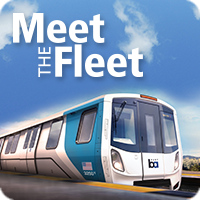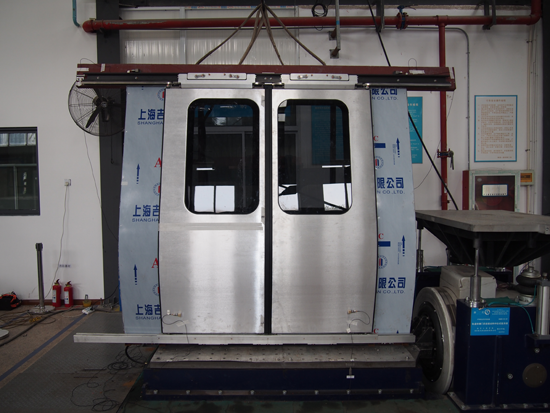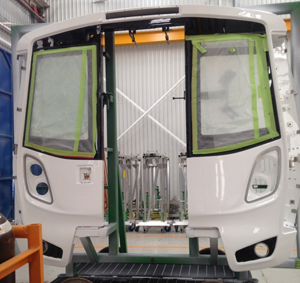Behind the scenes, BART's new train cars undergo extensive testing for safety, reliability
By MELISSA JORDAN
BART Senior Web Producer
BART's new train cars are in an important phase that is largely out of the public eye -- but these key steps are propelling the project forward to reality.
What's going on now doesn't have the sizzle of, say, showing off different seat models or color palettes. It's critical, however, for the top priority of ensuring a safe and reliable system that will last for decades to come.
John Garnham, group manager for the rail vehicle capital program, gave BART directors an update on the status of the project at the June 11 Board meeting.

"We've performed 96 of 229 qualification tests at the subsystem level," Garnham said. Qualification tests verify the design and manufacturing process and give a benchmark for acceptance tests, which will come later.
So far the tests have been made on subsystems or smaller parts of the whole, such as underfloor materials or electrical components. In the next quarter starting July 1, qualification testing will begin at the system level, looking at entire systems as well as individual components.
Also next quarter, staff will complete the "First Article Configuration Inspections" or FACI -- "where we go in and make sure the major subsystems meet the contract," Garnham said. "They become the standard. If there is any dispute later on we can go back and look at the FACI unit, and make sure every other unit is to that standard." So far, 44 of the 53 FACI have been completed.

The current forecast calls for the first pilot car to be delivered in November 2015, with more pilot cars coming until a whole new 10-car train is here by March of 2016.
"The first one is the most difficult," Garnham said. "That's where you iron out all the problems. It's imperative that we get the first one done correctly."
Assistant General Manager for Operations Paul Oversier echoed Garnham's words to the Board.
"Now is the time to take the time to get it right," Oversier said. "First and foremost, what these cars are about is reliability. We will make sure we are doing everything we can, making these cars as reliable coming out of the box as possible."

As an example of the rigorous testing the cars are put through, Garnham explained that side door qualification testing involved doing 1 million cycles of opening and closing doors. "It's a complicated test," he said.
The cars will begin to take shape as the floor, ceiling, side walls and end walls are put together in preparation for "splicing" or riveting it all together. While individual parts and some processes are taking place all over the world -- from doors made in China to seats made in Indiana, car body shell assembly in Mexico, car body compression testing in Canada, and final assembly in New York State -- car builder Bombardier must meet a 66% "Buy America" standard on the production vehicles.
When the cars begin arriving they are first tested on a BART test track in Hayward. Then they'll be tested on BART main line tracks in the overnight window when there is no passenger service. Then they'll be tested with passengers aboard. Some customers will get their first ride on the new trains as soon as fall 2016. A mixed fleet will operate with old cars being retired as new ones come on line until the entire fleet is made of new cars, estimated in 2021.
While it may seem like a long wait to the outside observer, to get an entire replacement of train cars from the Fleet of the Future to a fleet in reality, "This is a very aggressive schedule," Garnham said. For more on the new train cars, go to http://www.bart.gov/about/projects/cars
Meet the Fleet is an occasional ongoing series looking in-depth at different aspects of BART's new train cars.